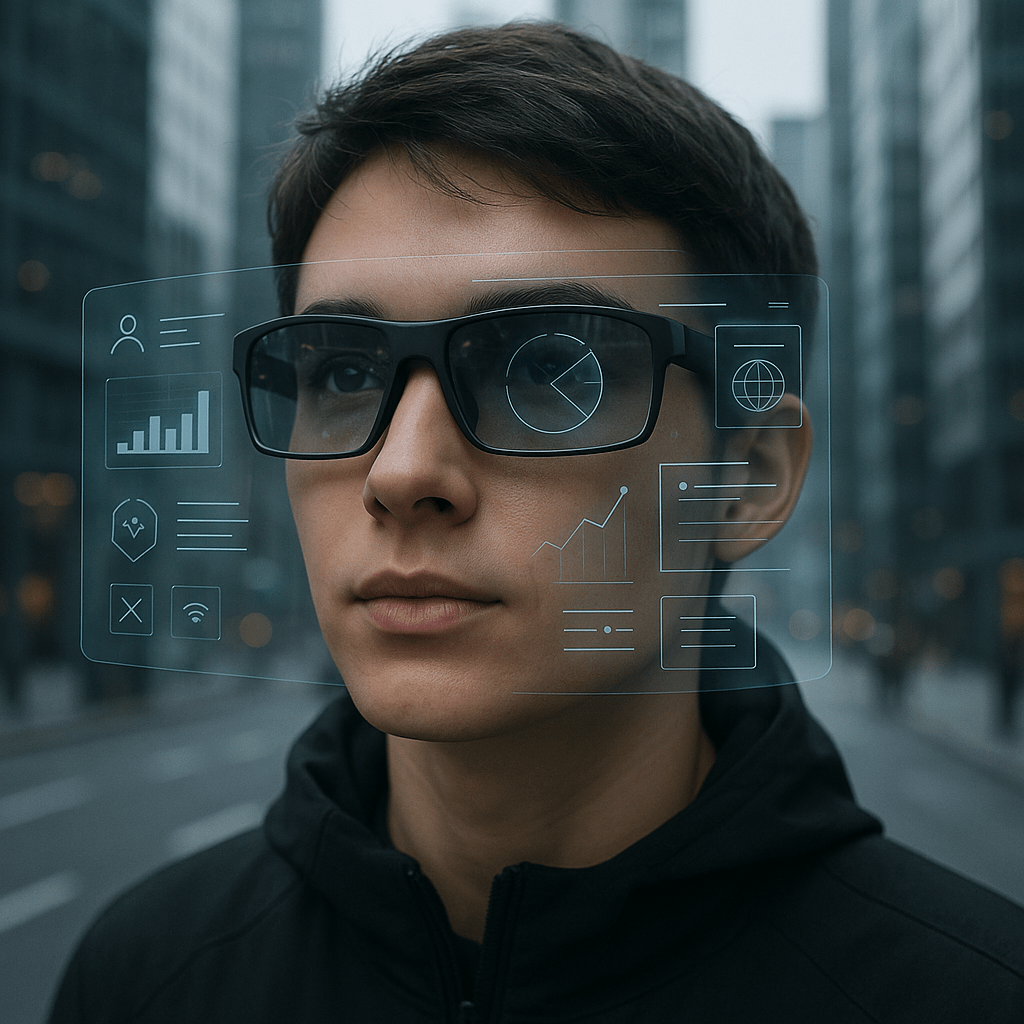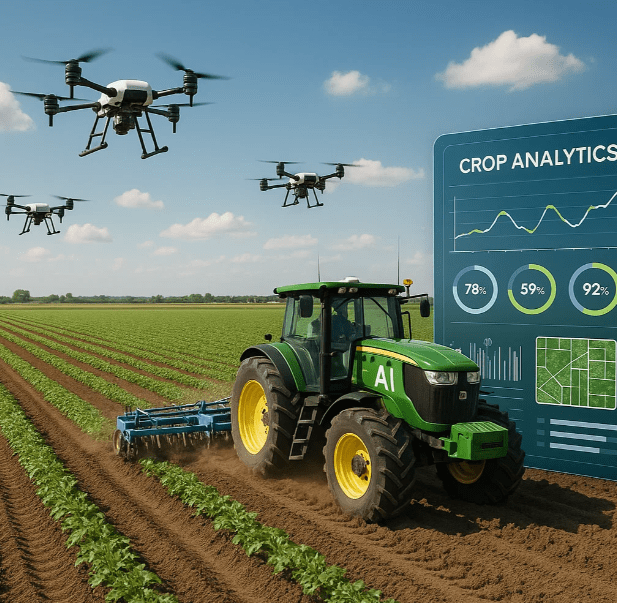Imagine something stronger than steel but as light as a feather. We’re about to witness a revolutionary breakthrough. An AI-Developed Material is on the verge of revolutionizing everything, providing both strength and lightness.
This material has the potential to revolutionize sectors such as aerospace and transportation. It’s going to usher in a new world of innovation and efficiency. Let’s explore the ins and outs of this amazing breakthrough and its implications.
Key Takeaways
- The new material has incredible strength along with a feather-light weight.
- AI is instrumental in its innovative creation.
- Potential uses range across different industries, boosting performance and efficiency.
- The use of such materials raises special challenges that need to be addressed.
- Environmental effects underscore the necessity for sustainable material sciences.
Introduction to Revolutionary Materials
Revolutionary materials revolutionized the way we imagine engineering and technology. They are special because of their incredible properties, going beyond traditional boundaries. We look forward to new technology that introduces sweeping change in many sectors.
The recent advances in material science have led us to materials we could only imagine before. Scientists, thanks to new technologies, have made things lighter and stronger. These materials are a big thing.
Investigating these new materials reveals they’re not concepts. They fix actual problems. They’re in everything from airplanes to household items. The effect of revolutionary technology is immense and wide-reaching.
The Use of AI in Material Science
AI has transformed material science a great deal in recent years. Researchers can better comprehend and design new materials more quickly with its assistance. AI can scan a lot of data rapidly, hence making it simpler to foresee how materials work.
This makes the discovery of new materials more rapid. It’s like discovering a treasure chest of potential. Previously, it would take several years to discover these materials.
Machine learning plays a central role in this area. It draws from historical data to make educated predictions about how materials will behave. Deep learning does it one better, solving problems that were previously difficult to solve.
This creates new avenues for creating materials. It’s like discovering a hidden doorway to innovation.
There are numerous instances of the influence of AI in material science. To illustrate, AI assisted in the prediction of superconducting material properties at high temperatures. This was previously a slow process.
With improvements in AI, material science is changing rapidly. It’s now more exciting and achievable to discover new materials.
What Makes This Material Stronger Than Steel
This new material is noteworthy due to its characteristics. Its molecular makeup increases the tensile strength and resilience. These are essential for items that must endure over a long period and withstand pressure.
This material is different from normal steel. It receives a unique treatment. This makes it even better.
By comparing it to steel, this material is much stronger. Let’s see why:
- Molecular Alignment: Its small size makes it resistant to bending and breaking.
- Lightweight Structure: It is light, making it simple to transport and potentially saving on shipping expenses.
- Environmental Resistance: It is resistant to corrosion and harsh temperatures, so it is a sturdy material in most applications.
Further investigation of the material reveals its worth as an alternative to steel. It performs better without added weight.

Feather-Light Properties: A Game Changer
New feather-light materials are revolutionizing the game across numerous sectors. Their unique composition allows them to be lightweight without compromising on strength. Due to intelligent design, these materials are strong and light enough to be carried with ease.
These materials are utilized in numerous applications. In space travel, they conserve fuel. In construction, they enhance the strength and cost-effectiveness of structures. They also make devices such as smartphones and laptops lighter and easier to carry.
Experts think that these materials will revolutionize the way we produce things. This revolution will influence the way we think and design, producing things in a more environmentally friendly way.
AI Created New Material: How It Was Done
The process of making this new material demonstrates AI’s incredible potential. We began by employing sophisticated algorithms to forecast new compound properties. This enabled us to test numerous combinations, settling on an ideal blend of strength and lightness.
Next, we tested each material extensively. We examined its mechanical properties and how stress-resistant it could be. AI was a key factor here, scanning through the test data to assist us in further improvement.
Through extensive tests, we acquired significant research outcomes. AI enabled us to accelerate our work and create new avenues for innovation. Through AI, we transformed the way we work in material science, coming up with new concepts.
Our quotes demonstrate the enthusiasm and dedication we brought to this project. Together, we demonstrated how AI can transform material production. We arrived at a material that is lighter and yet stronger than steel.
Potential Applications in Aerospace and Transportation
This new substance will revolutionize aerospace use and transportation technology. Its strength is high, and its weight is low. This can make air travel more efficient. Planes could be more fuel-efficient and less expensive to operate.
In automobiles, this substance can make automobiles more secure and lighter. Automobiles can be constructed of stronger components that provide better protection in accidents. This can make automobile travel safer and more trustworthy.
Our experiments with this material are looking very promising. We have seen how it can result in new designs and improved performance. As we continue to learn more, the prospects for flying and driving look good.
Advantages of Applying AI in Material Creation
In material science, the benefits of AI are increasingly evident. Artificial intelligence transforms the way we develop materials. Traditional methods tend to involve a lot of trial and error, which translates into expensive and lengthy time. AI accelerates and makes it more accurate.
AI makes huge research gains. It reviews massive amounts of information rapidly, determining the way things will behave. This allows us to make better decisions sooner.
Businesses applying AI are experiencing huge success. They accomplish more and pay less. Utilizing these emerging tools enables us to act quickly and maintain an advantage in a brutal economy.
Introducing AI into material creation has major benefits. It improves our work and speed. It’s a thrilling time to apply these technologies as we progress towards the materials’ future.

Challenges in Adopting New Materials
Rolling out new materials to industries has numerous challenges. These materials have amazing opportunities, but also have challenges. There are regulatory barriers that delay the process, requiring much testing and approval.
Production is also a challenge. Changing to new materials can disrupt production lines. It may involve new equipment and training, which is costly and time-consuming.
Winning the market is crucial. The public’s skepticism about their durability and reliability can influence sales. Companies have to demonstrate the advantages and applications to secure customers.
We need to address these challenges collectively. With knowledge of the various barriers, we can search for solutions to access new materials. This will also increase innovation in numerous areas.
Future of Strong and Light Materials in Consumer Products
In the future, applications of light, strong materials in products will become more fascinating. Such materials create new opportunities for products such as electronics, furniture, and sporting equipment. They perform better and are lighter.
Applying these materials in electronics translates to devices that are lighter and longer-lasting. Imagine a phone that can withstand falls without weighing too much. It’s simpler to carry around and use.
These advances in furniture result in designs that are not only aesthetically pleasing but also functional. They make things strong without weighing too much.
Sports equipment also gets a lot out of these advances. Lighter equipment translates into performing better and feeling less fatigued for athletes. It also makes sports safer because it minimizes injury risks.
Briefly, the future of high-strength light materials in goods is rosy. They will transform how we utilize technology and participate in sports. Such innovations shall play a critical role in our future.
Environmental Implications of New Material Technologies
Discovering AI-Developed Materials reveals to us significant environmental implications. Such new materials might revolutionize material science significantly, particularly in being eco-friendly. Utilizing sustainable materials enables us to consume less of the old, toxic stuff.
The production of these materials begins with how they are made. Most of the AI-Developed Materials incorporate green technology to reduce energy consumption and waste generation. This may reduce the negative environmental effect of previous materials. Each process, from acquiring raw material to discarding it, causes less harm.
Also, incorporating these materials into such things as buildings and automobiles can reduce a significant amount of waste. Recycling and reuse are made simpler with AI-Developed Materials. This leads us toward a path to a more environmentally friendly future, bringing to light the importance of green options.
Short and simple, employing AI-Developed Materials does more than enhance things. It’s a giant leap towards taking care of Mother Earth. The best from green technology in material creation demonstrates that we must innovate for the good of the planet.

Market Potential and Economic Impact of AI-Developed Materials
The coming of materials created by AI is a huge deal for most industries. Our market research indicates that such new materials are revolutionizing the way things are constructed. They’re also yielding huge economic gains in various sectors.
Experts indicate that we can anticipate huge growth as additional businesses utilize AI materials. They’re becoming increasingly popular as they are lightweight yet powerful. This is what gets investors hyped about material science in the future.
Taking the big picture, the firms utilizing these cutting-edge materials will perform optimally. They’ll be more competitive and increase their market share. Making use of AI-Developed Materials also benefits the environment by making things sustainable.
Ultimately, the influence of AI materials will be gigantic, not only financially. It will provide new job opportunities and tap new markets. This indicates that we’re moving towards an auspicious industrial future, all thanks to innovation.
Conclusion
We’ve learned about the wonderful world of AI-Developed Materials. They’re as strong as steel but as light as air. They indicate how material science and technology can converge.
AI is central to producing these materials. It shifts what we believe is possible in engineering and design. That is a major thing.
AI and material science combined are highly promising. They potentially lead to new applications in fields such as aerospace and transportation. This might improve things and benefit the environment.
Research is discovering new and exciting things. We must continue discussing these breakthroughs. This aids our comprehension of their effect.
Reflecting on these technologies, we notice that they’re more than mere materials. They can improve and streamline our lives. As we progress, let’s look at the good that can be done by these innovations. They can revolutionize industries and society.

FAQ
What is the AI-Developed Material that is stronger than steel?
This new material is a revolutionary composite produced with cutting-edge AI. It possesses unparalleled strength and is remarkably light. This is a new benchmark for material science.
How does this new material compare to conventional materials?
This AI-Developed Material surpasses steel when it comes to strength and weight. It’s ideal for uses requiring durability without added weight.
Which industries can make the most of this breakthrough material?
Most industries, such as aerospace, automotive, construction, and electronics, will gain. It has improved performance, efficiency, and safety.
How was the material created using AI?
AI played a crucial role in creating this material. It employed machine learning and simulations to forecast its properties. This facilitated rapid innovation and development.
Can you describe the challenges in embracing this new material?
Embracing new materials is hindered by regulatory barriers, manufacturing intricacies, and market uptake. These may retard their employment within products and systems.
What are the environmental effects of employing this material?
This material may be more environmentally friendly. It may have less waste and lower carbon emissions during production. This indicates a more environmentally friendly future in manufacturing.
What are the economic effects of AI-Developed Materials?
Materials created by AI may revolutionize economies. They may create new markets, bring in investments, and increase growth among industries that employ these innovative technologies.
Why does the lightweight attribute of the material render it a game-changer?
Its lightness simplifies its incorporation into products. This holds especially for aerospace components and portable equipment. It makes them more usable and efficient.











Leave a Reply